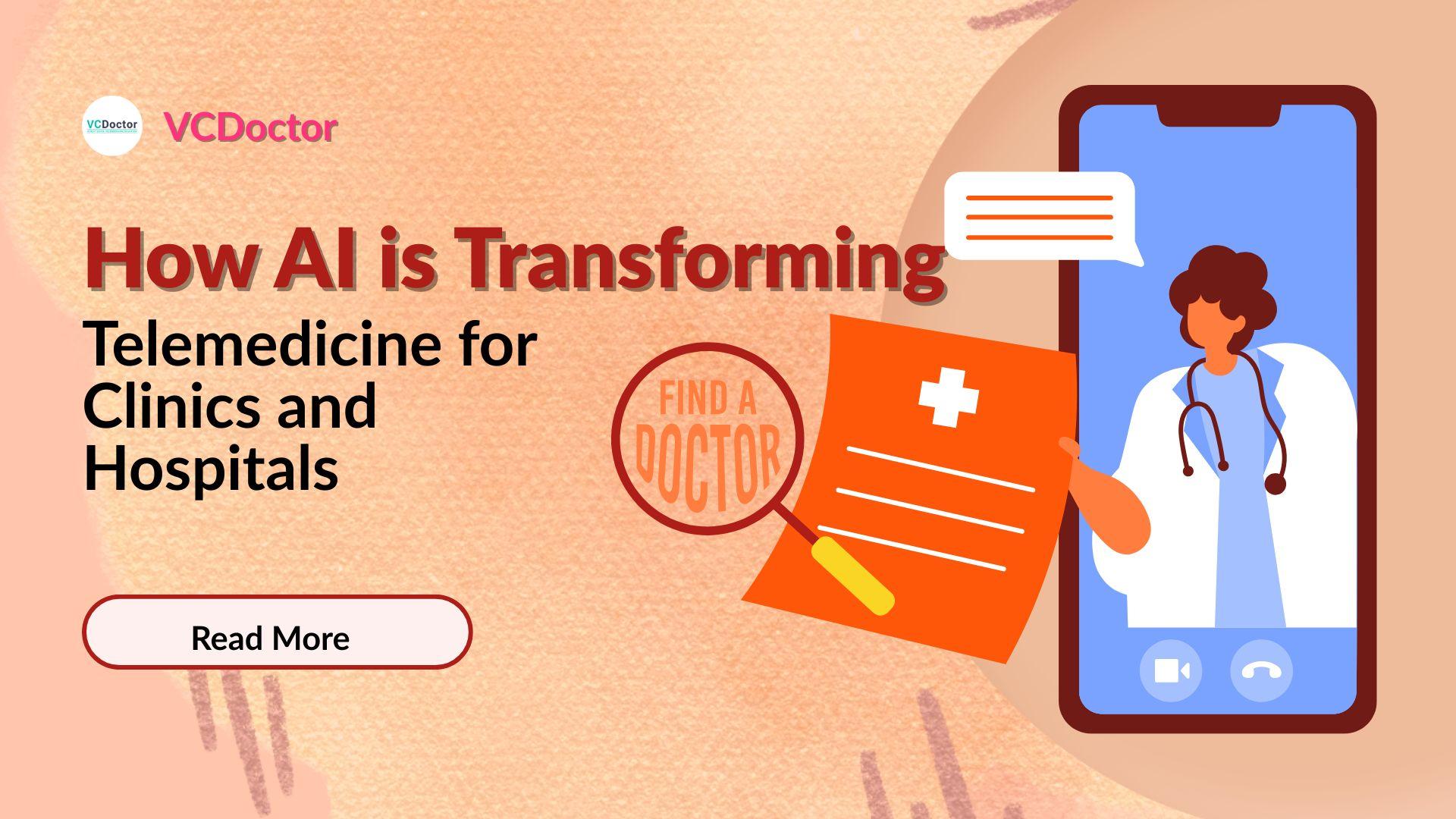How AI is Transforming Telemedicine for Clinics and Hospitals

In a post-pandemic world where remote care has become the new norm, Artificial Intelligence (AI) is taking center stage in healthcare innovation. Clinics and hospitals worldwide are increasingly integrating AI into their telemedicine software plans, not as a novelty, but as a strategic necessity.
From workflow automation to smart diagnostics and personalized patient engagement, AI redefines how modern healthcare is delivered, managed, and experienced.
Why AI is the Next Big Leap in Telemedicine
The rise of the most popular telemedicine platforms has already reshaped access to care. But AI is driving the next evolution, unlocking faster, smarter, and more scalable care delivery. For healthcare leaders, the question is no longer whether they should adopt AI but how soon they can do it without disrupting care quality or compliance.
1. Automating Clinical Workflows: Efficiency Without Compromise
One of AI’s most immediate benefits is streamlining administrative tasks that previously required significant manual effort. For example:
-
Appointment scheduling powered by AI algorithms optimizes time slots based on patient preferences and provider availability.
-
AI bots pre-fill EHR intake forms from patient messages, reducing manual entry.
-
Automated coding assistance helps apply accurate billing codes, such as the 99214 CPT code, ensuring appropriate reimbursement.
By deploying AI for such tasks, hospitals can significantly reduce operational costs, minimize errors, and free up staff to focus on higher-value work.
👉 Real-World Impact:
Integrated with EHR integration in healthcare, AI tools can auto-sync visit notes and billing data, accelerating the revenue cycle and reducing denied claims.
2. Smarter Diagnostics with Predictive and Assistive AI
Clinicians often face diagnostic pressure under tight schedules. AI now acts as a decision-support tool, augmenting their judgment with data-driven insights.
Applications include:
-
Image analysis in radiology and dermatology to flag abnormalities.
-
Remote patient monitoring systems use AI to detect early signs of deterioration.
-
Predictive models that suggest treatment paths based on similar patient profiles.
When integrated into HIPAA-compliant telehealth platforms, AI tools can automatically analyze patient responses, vital signs, or even vocal tone during a virtual consult to detect real-time red flags.
🧠 Important Note: AI doesn't replace doctors—it enhances their capacity to make informed decisions quickly and confidently.
3. AI-Powered Patient Engagement: Personalized, Proactive, 24/7
Engaged patients are more likely to adhere to treatment, show up for follow-ups, and report better outcomes. AI enables next-level engagement through:
-
Virtual assistants that answer questions instantly and escalate to humans when needed.
-
Smart reminders for medications, tests, and appointments.
-
Personalized content delivery based on medical history and lifestyle inputs.
These features are often built into a white label telemedicine platform, enabling hospitals to deliver branded, AI-enhanced experiences across web and mobile apps.
👉 What this means for providers:
Better engagement leads to improved patient satisfaction scores and retention—crucial metrics for modern healthcare systems.
4. Benefits for Hospitals and Clinics: More Than Just Tech Hype
Let’s look beyond the buzz and focus on tangible gains from AI in telemedicine:
| Area | Impact |
|---|---|
| Administrative Workload | Reduced by 30–40% with automation tools |
| Diagnostic Accuracy | Improved with AI-assisted image and symptom analysis |
| Revenue Cycle | Accelerated through AI-enhanced coding (e.g., 99214 CPT code) |
| Patient Experience | Enhanced with chatbots, personalization, and proactive outreach |
| Staff Satisfaction | Increased as providers spend less time on clerical tasks |
AI doesn’t just add speed—it adds intelligence to every layer of digital care delivery.
5. Challenges to Consider: Ethics, Privacy, and Oversight
Despite its benefits, AI adoption must be approached with caution:
-
Bias in AI algorithms can skew diagnoses if not tested across diverse populations.
-
HIPAA compliance must be maintained when AI processes sensitive patient data.
-
Human oversight is essential—AI should recommend, not decide, in most clinical contexts.
When using AI in telemedicine, always partner with platforms that are HIPAA compliant telehealth platforms and prioritize transparent, explainable AI.
6. How to Get Started with AI in Your Telemedicine Strategy
Here’s how clinics and hospitals can begin integrating AI—without disrupting existing workflows:
-
Audit your current tools: Are your systems ready for EHR integration in healthcare?
-
Start with automation: Implement AI in non-critical areas like triage, appointment reminders, or form filling.
-
Train your teams: Help providers understand where AI helps, and where their expertise still leads.
-
Choose scalable solutions: Prefer platforms that offer a white label telemedicine platform already enhanced with AI capabilities.
✅ Pro tip: Pilot AI with one department before scaling across the entire facility.
7. The Future: From Reactive to Predictive Healthcare
AI is paving the way for predictive, personalized care models:
-
Integration with wearables for real-time vitals tracking.
-
Federated learning that lets hospitals collaborate without sharing patient data.
-
Proactive outreach powered by machine learning—alerting patients about potential risks before they become problems.
As AI evolves, hospitals that embrace it early will lead the way in quality, access, and sustainability.
Conclusion: AI Is the Backbone of Next-Gen Telemedicine
Artificial Intelligence is no longer a futuristic concept—it's already transforming how care is delivered, experienced, and managed. For hospitals and clinics, AI-infused telemedicine software plans are not just about innovation but survival in a digital-first world.
From automated workflows to diagnostic support and personalized patient engagement, the opportunities are immense—as long as we implement them responsibly.
- Art
- Causes
- Best Offers
- Crafts
- Dance
- Drinks
- Film
- Fitness
- Food
- Giochi
- Festival
- Gardening
- Health
- Home
- Literature
- Music
- Networking
- Altre informazioni
- Party
- Religion
- Shopping
- Sports
- Theater
- Wellness



